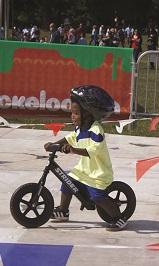

Although community leaders and residents still battle over whether to build skateparks — which often double as BMX parks — a greater yet gradual understanding of the activities and their participants appears to be emerging.
“Skateboarding and BMX have actually put us on the map,” says Tammy Dunn, sports development manager at the Snohomish County (Washington) Sports Commission. The county boasts a USA BMX-sanctioned track and 10 skateparks, and is an early leader in the U.S. revival of distance skateboarding.
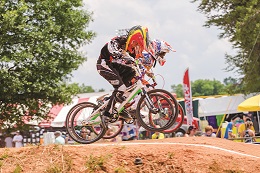
In many cases, local skateboarding and BMX organizations operate the parks and organize charitable and competitive events; convention and visitors bureaus piggyback off of them.
“CVBs now have our events on their radar,” says Nick Adams, chief marketing officer for Chandler, Arizona-based USA BMX, which sanctions more than 350 tracks and more than 12,000 events in the United States. “Our sport has grown, and the perception of the sport has changed, so the need to interact with the local CVB has increased. More and more communities realize the impact the sport can bring.”
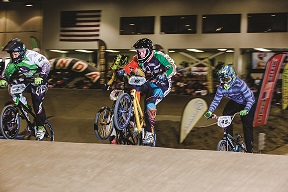 Double Duty
Double Duty
While it’s true that many skateparks double as BMX parks, the obvious connections between skateboarding and BMX end there, according to Adams. “Skateboarding and BMX are really two totally different sports,” he explains. “BMX freestyle has a lot in common with skateboarding, because they share the same parks and some of the same tricks. But beyond that, they don’t have much in common.”
That said, and for the purposes of this article, both sports share the spotlight because they’ve been on the leading edge of extreme sports growth. BMX racing debuted at the 2008 Summer Olympic Games in Beijing, and Scott Blackmun, chief executive officer of the United States Olympic Committee has gone on record stating that “skateboarding could do for the Summer Olympics what snowboarding did for the Winter Olympics.”
What’s more, some locales specialize in both sports. In addition to its skateparks (more on those later), Snohomish County is home to McCollum Park BMX, a privately operated facility in Everett, Washington. In August, the track hosted an annual three-day weekend of BMX excitement, including a Race for Life charity event for The Leukemia & Lymphoma Society on Friday, a Pro-Am event with $10,000 in prize money on Saturday and state championship qualifying races on Sunday.
A total of 820 riders participated, Dunn says. While most of them traveled from within the state, many brought their families — and not just to watch. “BMX is really a family sport,” Dunn says.
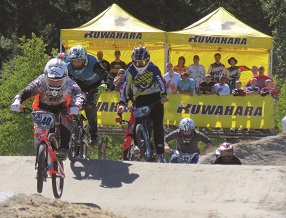
Race Results
Dan Despotopulos knows how important BMX racing can be for a destination’s tourism economy. As the Deschutes County (Oregon) Fair & Expo Center’s facility director, he’s in the midst of overseeing a long-term arrangement with USA BMX to host the Great Northwest Nationals for 12 straight years — from 2008 through 2019. Now, in cooperation with Smith Rock BMX, an area organization that operates a track in Redmond, he wants to make sure the event stays at the center.
Held every April on a 40,000-square-foot arena floor filled with dirt, the Great Northwest Nationals attracts riders from up to 14 states, as well as Canada and Mexico. “This isn’t just a fairgrounds,” Despotopulos says about the sprawling area that spans 320 acres, including the arena and four large conference centers, which attract up to 400 events per year. “This facility opened in 1999, and it was built for the future. We still have so much room to expand.”
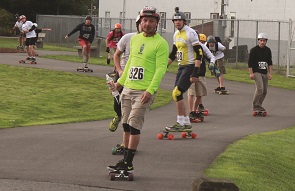
Meanwhile, the track also hosts regular weekly races, which bring lots of traffic and dollars into the city of 13,500 residents. “You can tell when Miami BMX has some kind of event, because we see a bump in our numbers,” says Amanda Davis, executive director of the Miami Convention and Visitors Bureau. “People just don’t get in their car and drive to Miami, Oklahoma. We’ve got to be creative.”
To that end, Davis and other city officials are helping the Miami BMX track, one of only four in the state, burnish its reputation and attract more competitions. “We absolutely take care of our event owners,” she says. “An extra 1,500 people in town is a big deal for us.”
Another big deal is the fact that St. Cloud, Minnesota, ranks third in the country in the number of active BMX riders, right behind California and Florida. “When you consider that we can only ride four months of the year, that’s phenomenal,” says Kelly Sayre, director of sports and special events at the St. Cloud Area Convention and Visitors Bureau, adding that Alise Post, a four-time USA Cycling BMX national champion and a member of the U.S. women's BMX cycling team at the 2012 Summer Olympics, hails from St. Cloud.
Pineview Park BMX, site of the 2015 USA BMX Land O’Lakes Nationals, offers racing and practices nearly every day of the week, Sayre says, and in recent years has hosted state competitions, fundraising events and clinics. Post and her family have been instrumental in revitalizing Pineview Park BMX — formerly a run-down city park.

From BMX to SBSX
Back to Snohomish County: Remember the 10 skateparks strategically located throughout the county? One of them, the Mukilteo Y Skate Park (affectionately called “The Muk” by locals) is one of the largest in Washington. Spanning 20,000 square feet, The Muk recently added a 28-foot indoor mini ramp and hosts camps and competitions — most notably the skateboarding component of the Subway© Washington Games held in conjunction with the Seattle Sports Commission.
In an effort to combine the skill of skateboarding with the thrill of BMX racing, Snohomish County also is home to the annual Arlington Centennial Trail Skateboard Push Race. Sanctioned by the International Distance Skateboard Association, the two-day October event involves skateboarders racing on a one-mile course for one-mile, 5K and half-marathon distances.
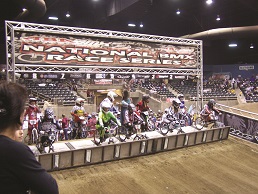
Wheel Progress
While push races and SBSX have attracted many travelers to Arlington, Washington, officials in Round Rock, Texas, hope the city’s 14,000-square-foot Shylah Dame Skate Park will put that already sports-crazed community on the extreme sports map. “We’ve always wanted to expand into X Games-type sports,” says Rick Atkins, director of the city’s parks and recreation department. “And we knew our residents needed a facility like this.”
Opened in 2004, the facility boasts street and bowl components, and hosts local and professional competitions, classes and open skates. Touring musicians also like to make stops to get in a little recreation between gigs, turning the skatepark into impromptu meet-and-greet sessions.
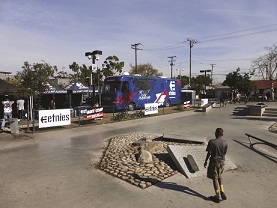
In St. Cloud, the popularity of the St. Cloud Skate Plaza has reached national levels, too. The Youth Shelter Supply, a local skate shop, oversees competitions, camps, demos, barbecues and site cleanups.
Every July, the park plays host to the Midwest Region’s Volcom Stone Wild in the Parks touring series, in which boarders from multiple states vie for an opportunity to compete in a national event held at the lifestyle apparel company’s headquarters in San Clemente, California. “St. Cloud has the biggest public skatepark in Minnesota,” Pettit says, “and that’s what an event like this needs.”
Local Attention
Some communities build skateparks strictly for local residents; if they wind up generating tourism dollars or becoming destinations for other skateboarders, that’s a bonus.
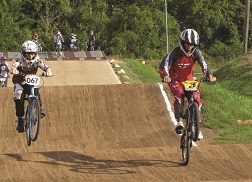
In Poteau, Oklahoma, the nonprofit Nashoba Youth Foundation secured grant money from the state and the Tony Hawk Foundation to build two skateparks, Off Broadway Skatepark in 2012 and Nashoba Skatepark in nearby Heavener in 2013, designed to meet the needs of at-risk youth. Eventually, events started to evolve, anchored by the Oklahoma Slam Skate for Autism Awareness, which draws pros and out-of-towners. Next, Fabian says she’d love to provide the BMX riders who use the skateparks with an event of their own: “It’d be awesome to have something just for them.”
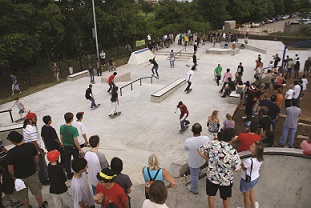
Donelon founded the Action Sports Kids Foundation to raise money for these parks, and a ninth skatepark is expected to open in 2015. He notes that the Long Beach Area Convention & Visitors Bureau is a big skatepark supporter, and officials there refer all skateboard-related inquiries to him.
“We don’t attract a lot of other sporting events to Long Beach, because we’re not Orange County,” Donelon says, tongue only partially in cheek. “But Long Beach is a destination place for skateboarding and BMX. There are always pros here.”

